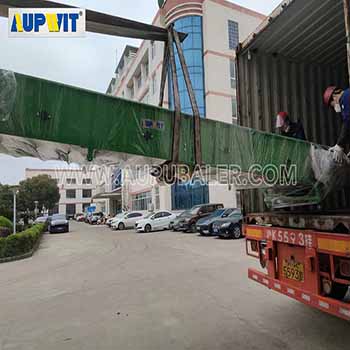When metal shear blades become dull, they can cause poor cutting quality, excessive burrs, and increased strain on the machine. Here’s a step-by-step guide to quickly restore their sharpness, balancing efficiency with safety:
1. Safety First: Power Off and Secure the Machine
- Unplug or Shut Off Power: Ensure the shear is completely powered down to prevent accidental activation.
- Lock the Blade in a Safe Position: Use the machine’s locking mechanism (e.g., a hydraulic lock or manual clamp) to secure the upper blade in an elevated, stable position. Never work on blades while they are unsecured.
- Wear Protective Gear: Use gloves, safety glasses, and gloves to avoid cuts or debris exposure.
2. Inspect Blade Wear and Damage
- Visual Check: Examine the cutting edges for nicks, cracks, or uneven wear. Light dullness or minor nicks can often be repaired quickly, but severe damage (e.g., deep grooves or fractures) may require professional resharpening or replacement.
- Test Cutting Performance: Try cutting a scrap piece of metal. Dull blades will leave rough edges, excessive burrs, or require excessive force, confirming the need for sharpening.
3. Basic Sharpening with Portable Tools (For Minor Dullness)
For 轻度钝刀 (lightly dull blades) without major damage, use these quick methods:
Method 1: Hand Grinder (Angle Grinder or Bench Grinder)
- Prepare the Grinder: Use a grinding wheel suitable for metal (e.g., an aluminum oxide wheel with a medium grit, 60–80 grit).
- Maintain the Original Bevel Angle: Most shear blades have a specific bevel angle (often 14°–22° for mild steel, depending on the machine). Use a blade guide or angle gauge to ensure you grind at the same angle as the original edge to avoid altering the blade’s geometry.
- Grind Gently: Make light, even passes along the blade edge, moving from the base to the tip. Avoid overheating the blade by keeping grinding sessions short (e.g., 10–15 seconds per section) and cooling with a damp cloth as needed. Overheating can soften the blade’s heat-treated steel.
- Deburr the Edge: After grinding, use a file or whetstone to smooth the micro-burrs formed during grinding. Run the file along the edge at a low angle to refine the surface.
Method 2: Portable Belt Sander or File
- For Small Blades or On-Site Repairs: Use a belt sander with a medium-grit belt (e.g., 80–120 grit) or a flat bastard file.
- Stroke Direction: Apply even pressure and stroke in the direction of the cutting edge (away from the blade’s face) to avoid rounding the edge.
- Check Symmetry: Ensure both sides of the blade are sharpened evenly to maintain cutting balance.
4. Advanced Sharpening for Severe Wear
- Professional Resharpening Service: If blades are heavily worn, curved, or made of hard materials (e.g., high-speed steel), send them to a specialized metalworking shop. They use precision grinders to restore the original geometry and hardness.
- Replace Blades if Necessary: If sharpening no longer restores functionality (e.g., blades are too thin from repeated grinding or cracked), install new blades compatible with your shear model. Refer to the manufacturer’s manual for replacement steps.
5. Reinstall and Test the Blades
- Align Blades Properly: After sharpening or replacing, ensure the upper and lower blades are correctly aligned with the recommended cutting clearance (typically 5–10% of the material thickness). Use a feeler gauge to check the gap.
- Test with Scrap Material: Make a few test cuts on scrap metal to verify smoothness, edge quality, and reduced burrs. Adjust the clearance if needed.
-
Lubricate Blades: Apply a thin layer of cutting oil or lubricant to reduce friction and extend blade life during operation.








